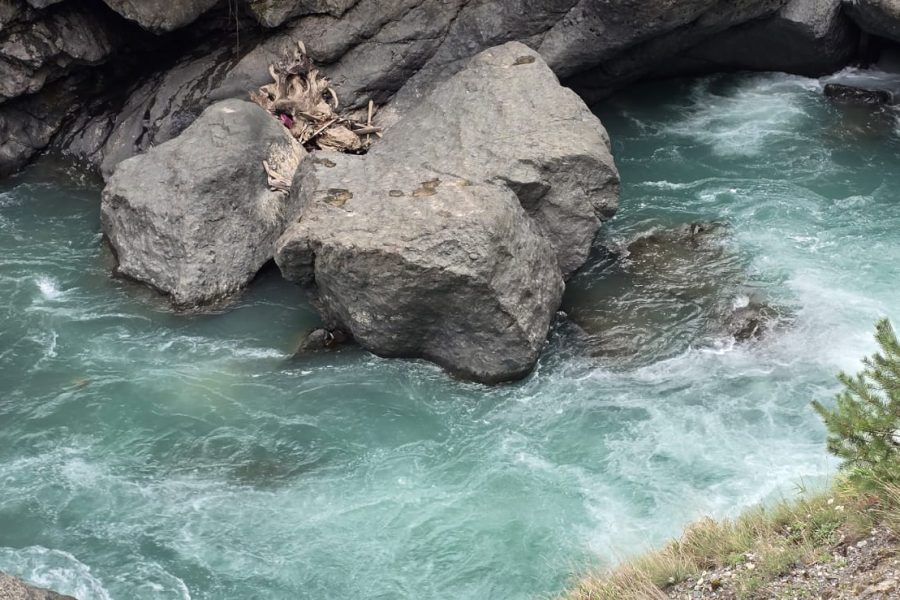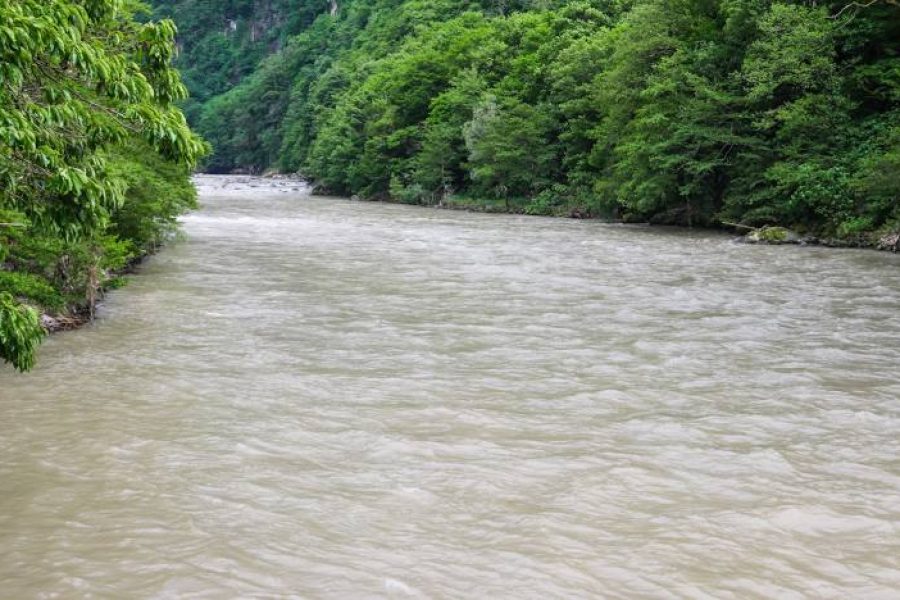Mount Mkinvartsveri (Kazbek): The Mythical Giant
Have you ever seen something so massive, so grand, that it just stops you in your tracks? For me, that was the first time I saw Mkinvartsveri, also known as Mount Kazbek. You round a bend on the Georgian Military Highway, and there it is. It doesn’t just sit on the horizon; it commands it. A colossal pyramid of rock and ice, piercing the sky, with a tiny, ancient church standing guard at its feet. It’s a sight that silences you, that makes you feel both incredibly small and profoundly connected to something ancient and powerful.
They call it the ‘Glacier Peak,’ and for good reason. Even on the warmest summer day, its summit is a brilliant, blinding white. It’s a living canvas, changing by the hour. In the morning, the rising sun paints its eastern face in soft shades of pink and gold. By midday, it’s a stark, intimidating giant under the harsh sun. And as evening approaches, long, deep blue shadows creep across its glaciers. It’s a constant, silent spectacle. And seeing the Gergeti Trinity Church, that tiny stone sentinel that has weathered centuries of storms, standing bravely before this immense backdrop… it’s a lesson in faith and resilience, right there in front of you.
But Mkinvartsveri isn’t just a stunning view. When you’re there, you can almost feel the stories it holds. This is the mountain where legends say Amirani, Georgia’s version of Prometheus, was chained as punishment for giving fire to humanity. You can almost imagine his cries echoing in the wind that whips across the slopes. You hear whispers of a hidden cave filled with sacred treasures, a secret monastery where monks lived in solitude, suspended between heaven and earth. The mountain breathes history. It’s a place where myth and reality blur, where every rock and every gust of wind seems to have a story to tell.
And for some, the mountain doesn’t just ask to be seen; it asks to be climbed. The journey to its summit is not an easy one, but it is one of the most accessible 5,000-meter peaks in the Caucasus, a gateway for aspiring mountaineers. It’s a grueling test of endurance, pushing you through freezing nights and across vast, cracked glaciers. It demands respect. But it gives back so much more. To stand on that summit, over 5,000 meters high, with a sea of clouds stretching out beneath you and the endless chain of the Caucasus peaks all around… it’s a moment of pure clarity. You don’t just conquer the mountain; you connect with it, and in a way, you discover a stronger part of yourself.
Elevation
Mount Mkinvartsveri (Kazbek) stands at an imposing elevation of 5,054 meters (16,581 feet) above sea level. This makes it the third-highest peak in Georgia and one of the most prominent summits in the Caucasus mountain range.
Location
The mountain is located in the Kazbegi Municipality, within Georgia’s Mtskheta-Mtianeti region, right on the border with Russia. The nearest and most significant settlement is the town of Stepantsminda, which serves as the primary base for travelers, hikers, and climbers.
Accessibility & Hiking/Climbing Routes
Mkinvartsveri is one of the most accessible 5,000-meter peaks in the Caucasus. The journey typically begins from Stepantsminda.
- The Classic Route: The most common route for ascent starts from Stepantsminda, passing the iconic Gergeti Trinity Church (2,170m). From there, the trail leads to the Bethlemi Hut (AltiHut at 3,653m), which serves as the base camp. The summit push from the hut involves crossing the Gergeti Glacier and ascending a steep, snow-covered slope.
- Difficulty: While not overly technical (rated 2B on the Russian grading system), the climb requires excellent physical condition, proper acclimatization, and basic mountaineering skills.
Unique Features & Historical/Cultural Significance
- Geological Feature: It is a dormant stratovolcano. Its double-coned peak is permanently covered by glaciers.
- Mythology: In Georgian folklore, this is the mountain to which Amirani (the Georgian equivalent of Prometheus) was chained for stealing fire from the gods.
- The Betlemi Cave: A mysterious cave at around 4,000 meters, believed to have been a hermitage for Orthodox monks.
- Gergeti Trinity Church: This 14th-century church, perched on a hill with the magnificent peak as its backdrop, has become a symbol of Georgia.
Best Time to Visit
The optimal window for climbing is during the summer months, from late June to mid-September. For general hiking, the season extends from late May to early October.
Geography & Climate
The landscape begins with deep river valleys, shifting to subalpine meadows and steep, rocky slopes. The upper reaches are dominated by permanent glaciers. The climate varies significantly with altitude, from moderately humid in the valleys to arctic-like conditions on the summit.
Tourist Information
Tips for Hikers and Climbers
- Acclimatize Properly: Spend several nights at altitude before attempting the summit.
- Be Physically Prepared: Engage in cardiovascular and strength training before your trip.
- Start Early: Summit days begin very early (around 1-2 AM) to avoid afternoon weather changes.
Nearby Accommodation, Guides & Permits
- Accommodation: Stepantsminda offers a wide range of options, from luxury hotels to guesthouses. The Bethlemi Hut requires advance booking.
- Guides: Hiring a certified local mountain guide is strongly recommended.
- Permits: A border zone permit is required for certain routes. Check with your guide agency.
Safety Tips & Recommended Equipment
Never underestimate a 5,000-meter peak.
- Equipment: Mountaineering boots, crampons, ice axe, helmet, harness, and a proper layering system for clothing are essential.
- Safety: Always check the weather forecast. Never climb alone. Carry a reliable communication device.




f8s9jg